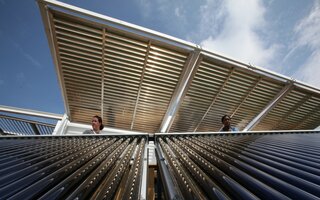Journal Article
Exploring Site-Specific Carbon Dioxide Removal Options With Storage or Sequestration in the Marine Environment – The 10 Mt CO2 yr−1 Removal Challenge for Germany
Authors
Publication Date
DOI
Key Words
Related Topics
Sustainable Development
Climate
Marine carbon dioxide removal (mCDR) and geological carbon storage in the marine environment (mCS) promise to help mitigate global climate change alongside drastic emission reductions. However, the implementable potential of mCDR and mCS depends, apart from technology readiness, also on site-specific conditions. In this work, we explore different options for mCDR and mCS, using the German context as a case study. We challenge each option to remove 10 Mt CO2 yr−1, accounting for 8%–22% of projected hard-to-abate and residual emissions of Germany in 2045. We focus on the environmental, resource, and infrastructure requirements of individual mCDR and mCS options at specific sites, within the German jurisdiction when possible. This serves as an entry point to discuss main uncertainty factors and research needs beyond technology readiness, and, where possible, cost estimates, expected environmental effects, and monitoring approaches. In total, we describe 10 mCDR and mCS options; four aim at enhancing the chemical carbon uptake of the ocean through alkalinity enhancement, four aim at enhancing blue carbon ecosystems' sink capacity, and two employ geological off-shore storage. Our results indicate that five out of 10 options would potentially be implementable within German jurisdiction, and three of them could potentially meet the challenge. Our exercise serves as an example on how the creation of more tangible and site-specific CDR options can provide a basis for the assessment of socio-economic, ethical, political, and legal aspects for such implementations. The approach presented here can easily be applied to other regional or national CDR capacity considerations.





